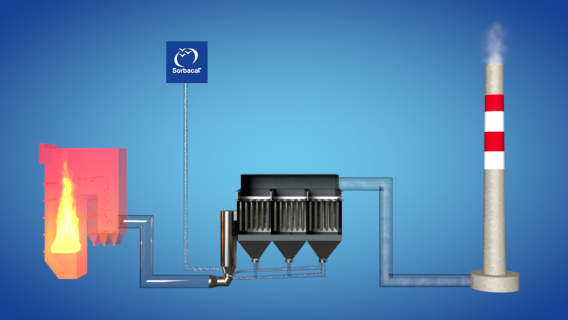Lhoist offers a full range of Sorbacal® sorbents for the different types of dry processes. Their benefits include:
- superior gas removal performance
- less sorbent consumption
- reduced residue generation
Dry processes are also suitable for removing micro-pollutants through injection of Sorbacal® Micro sorbents. The main types of micro-pollutants to be removed are mercury (Hg), organic components such as dioxins/furans (PCDD/PCDF), polychlorinated biphenyls (PCBs), polycyclic aromatic hydrocarbons (PAHs) and odors.
The micropollutant sorbent can be injected separately from the calcium hydroxide or in the form of specific blends to simultaneously remove acidic gas components and micro-pollutants. Volatile metals like selenium and arsenic are captured by chemical reaction with the calcium hydroxide sorbents and do not require additional sorbents. Dry processes in combination with tailor-made, high quality sorbents enable the best performance and minimize residue production and disposal cost.
Based on their extensive process experience, our experts can assist you to optimize your dry process.










